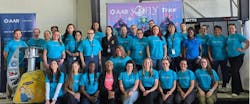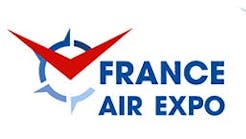BSA Adds 737 Family to its Training Portfolio
EASA Part-147 approved training organization, British School of Aviation (BSA), has secured approval from the UK Civil Aviation Authority (CAA) to deliver face to face and online synchronous engineer type rating training for the Boeing 737 Classic, NG and MAX aircraft.
Delivered by Boeing trained instructors from its facility at London Luton Airport, as well as online, BSA will provide delegates with the necessary theoretical training, group learning and revision sessions and examinations. The final practical element will be delivered on the relevant aircraft type, in accordance with COVID-19 health and safety protocols.
In response to the restrictions on global travel, BSA had already pivoted its training proposition to an online model, which launched in July with a Boeing 787 synchronous type rating course for B1/B2 qualified engineers.
Commenting on its latest approval from the UK CAA, Shonu Bamrah, chief executive officer of BSA said that the training company was already investing in new training methodologies prior to the coronavirus outbreak, in order to reduce costs for the aviation industry.
"Even before COVID-19, BSA was in advanced discussions with a number of international customers regarding the merits of online and virtual reality based training, in response to the economic challenges faced by the industry. This process has been accelerated by the impact of the pandemic, so BSA’s successful introduction of a synchronous online platform marks an important step forward in the development of innovative new approaches to delivering cost-efficient mandated training.”
“Whilst we anticipated increased demand for distance learning solutions, face-to-face training is still required, particularly in regard to new recruits, such as apprentice engineers, which airlines and MROs will need in the years ahead. BSA is ready to support them with a cost-efficient outsourced solution.”
As government restrictions are further eased, BSA expects students to return to its facility, so the business has implemented a low-density classroom configuration of up to nine students, as opposed to previous intakes of 16, in order to ensure social distancing procedures. Additional health protection measures are also in place, including visitor temperature checks, ‘smart’ pathways, hand sanitizing stations and use of face coverings.





